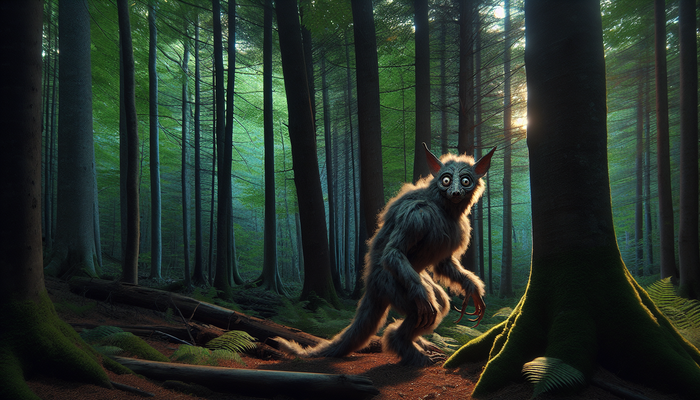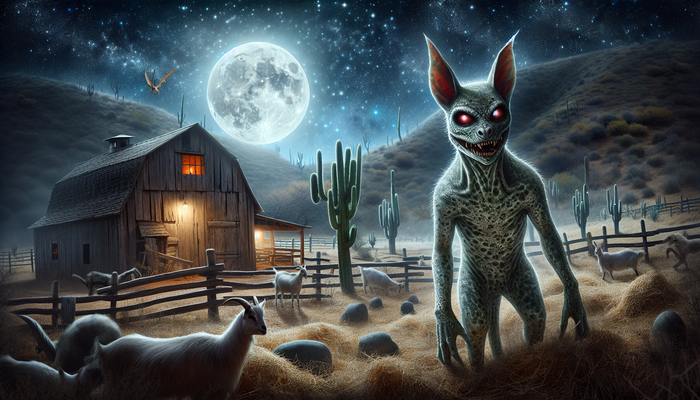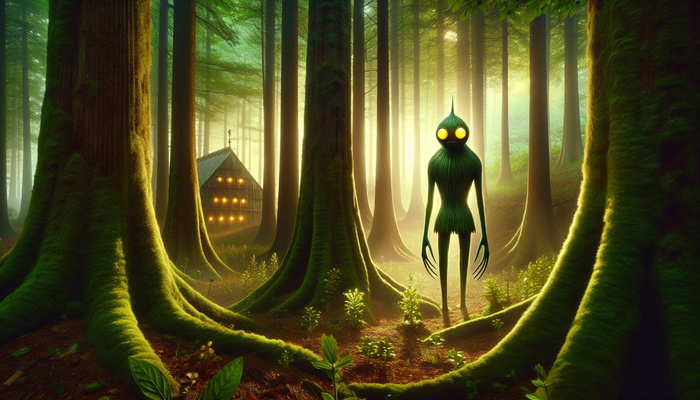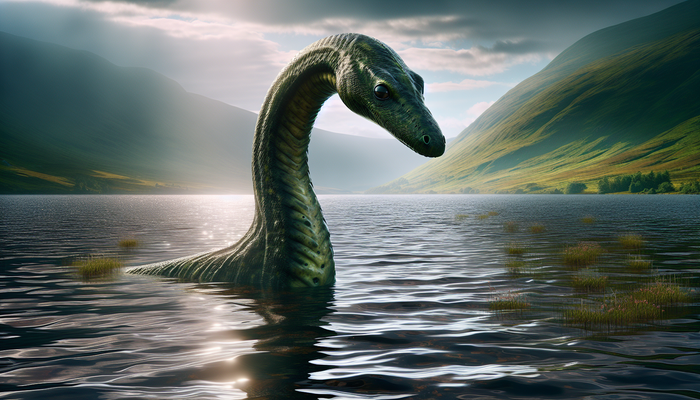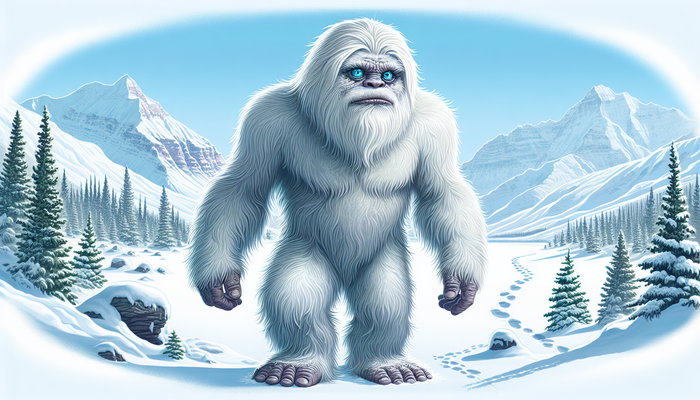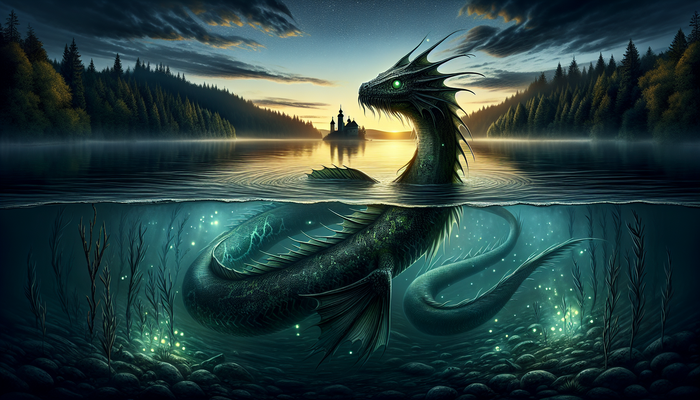Pale Crawler Mythology You Need to Know About
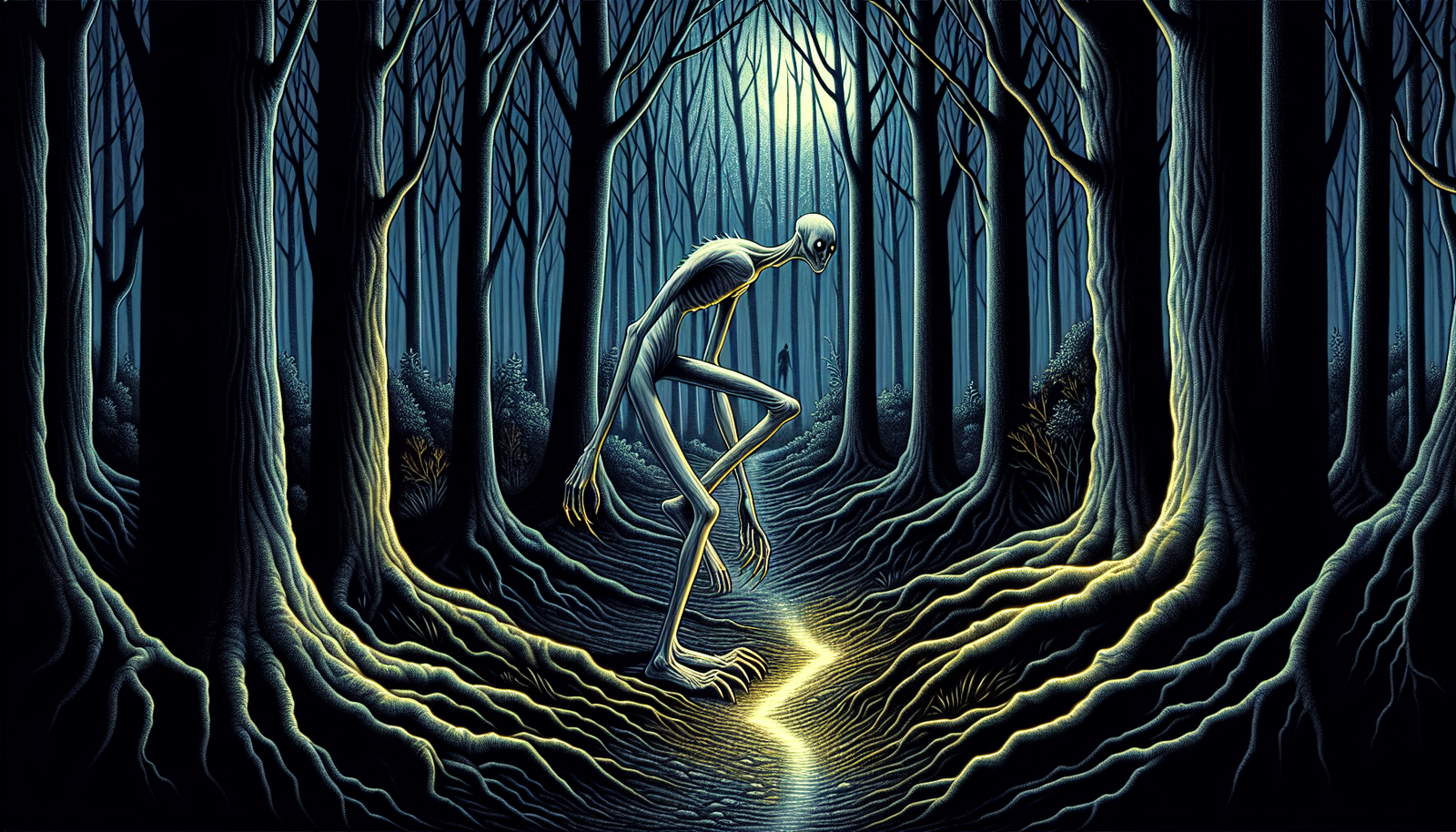
Introduction
The pale moonlight filters through the trees as I make my way down the narrow forest trail, senses alert for any sign of movement. As a Bigfoot researcher, I'm accustomed to spending long nights alone in the wilderness, but something about this particular evening sets my nerves on edge. A heavy silence hangs in the air, broken only by the occasional hoot of an owl or rustle of underbrush. Then, just ahead, I catch a glimpse of something that makes my blood run cold.
A gaunt, pale figure crouches beside a tree, its elongated limbs bent at impossible angles. My flashlight beam illuminates its hairless flesh, so white it seems to glow in the darkness. As I stand paralyzed, the creature turns its head, revealing a lipless mouth lined with tiny razor-sharp teeth. Its eyes are like endless black voids staring deep into my soul.
In the blink of an eye, the apparition scuttles into the thicket with unnatural speed, leaving me alone once more with the shadows. Though it lasted mere seconds, the encounter leaves me shaken to my core. What was that thing? And could it be related to the mysterious cryptids I've dedicated my life to understanding?
As someone who has spent years studying legends of mysterious creatures, I'm no stranger to bizarre encounters. But the pale, twisted figure I witnessed in those woods defies any explanation I can conceive. In the days since, I've scoured obscure folklore texts and online forums for clues about the entity's origins and nature. The term that keeps appearing, linked to sightings of similar creatures, is "pale crawler."
These elusive cryptids have captured the imaginations of fellow researchers and witnesses alike. And the more I uncover about them, the deeper I find myself drawn into their enigmatic lore. Come along as I unveil the shadows around these strange creatures and attempt to shed light on the fears that lurk in humanity's collective unconscious. The path ahead is uncertain, but the search for answers is an adventure in itself.
Origins and Descriptions
While tales of ghosts, demons and night-terrors have existed across cultures for millennia, the specific phenomenon of the pale crawler is a surprisingly recent one. By most accounts, these creatures only entered the public consciousness in the early 2000s, with the rise of internet forums devoted to strange sightings and paranormal encounters.
Witnesses generally describe pale crawlers as humanoid entities between five and seven feet tall, with elongated torsos and limbs that allow them to move in an unsettling, arachnid-like gait. Their skin appears pale and hairless, although some reports mention leathery or translucent flesh with visible veins or bones beneath the surface. The proportions are skewed and distorted compared to a normal human, with oversized heads and mouths full of needle-like teeth being common traits. Despite their sickly and skeletal appearance, witnesses often report pale crawlers possessing surprising speed and dexterity, able to traverse uneven terrain and squeeze into impossibly small spaces with disturbing agility.
When it comes to explaining the origins of these creatures, theories abound. Some cryptozoologists have drawn parallels between pale crawler sightings and ancient mythological creatures such as ghouls, vampires, wendigos and other undead spirits. These malevolent entities were said to prey on human flesh and strike fear into the hearts of men. While the links are speculative, the similarities in appearance and behavior raise intriguing questions about whether our ancestors' tales could have been inspired by early encounters with pale crawlers or creatures like them.
Other researchers postulate that pale crawlers may represent a modern evolutionary offshoot of primates or early hominids adapted for life underground or in dense forests. Skeptics argue that they are likely to be the product of hoaxes and overactive imaginations in our digital age. But the consistency of accounts across multiple witnesses makes it difficult to dismiss the phenomenon outright. As is often the case in cryptozoology, the truth likely resides somewhere in a gray area between fact and fiction.
Sightings and Encounters
While pale crawler reports have emerged from locales as diverse as Russia, Brazil and the Philippines, certain hotspots of activity have cemented their place in cryptid lore. One of the most famous is the city of Fresno, California, where home surveillance cameras have captured footage of slender, pale figures dubbed the "Fresno Nightcrawlers" since the mid-2000s. In one chilling video, a pair of spindly legs without a torso or head appears to walk casually across a lawn at night, as if out for a stroll. The creature vanishes into the shadows, leaving no trace beyond its enigmatic presence.
In 2011, similar footage surfaced from Yosemite National Park, adding credibility to the idea of an undiscovered species hiding in the wilderness. Park officials denied the videos' authenticity, but cryptozoologists remain unconvinced. Other sightings have emerged across California, from suburban backyards to desolate hiking trails. Based on the escalating reports, the state seems to be a hotbed of pale crawler activity.
Eyewitness accounts from other parts of North America paint a frightening picture of these elusive beasts. One woman described to me an experience from her childhood in rural Illinois when a gaunt humanoid figure dashed across the road ahead of her family's car. Despite only glimpsing it briefly, the memory of its elongated limbs and pale flesh still instills dread decades later. Campers, hikers and hunters have also reported glimpses of pale crawlers lurking just out of sight in forests and along desolate backroads. They are often seen only briefly before vanishing, leaving behind more questions than answers.
Encounters with the creatures are rarely prolonged, but those who have observed them up-close describe a deeply unsettling experience. The appearance alone induces shock and panic, while the presence of the pale crawler is said to trigger an overwhelming sensation of primal terror. Yet as frightening as they may appear, there is little evidence to suggest these mysterious entities are overtly threatening or aggressive towards humans. Their reclusive nature and preference for isolated locations imply a wariness of people, despite our fear of them.
Theories and Speculation
When confronted by something so alien from our ordinary experience, it's only natural for the human mind to grasp for explanations. In the case of pale crawlers, theories have arisen over the years to account for their seemingly impossible existence. The challenge lies in untangling the plausible from the outlandish.
One of the more radical theories posits that pale crawlers are interdimensional beings that temporarily cross through rifts or portals into our physical world. This would account for their transient presence and ability to vanish abruptly. Skeptics argue that the concept of alternate dimensions remains hypothetical at best with no solid scientific basis. But dimensions beyond our known four have been posited by eminent minds like Stephen Hawking, leaving the door open for speculation.
A more grounded hypothesis proposes that pale crawlers represent an undiscovered species, perhaps the relic of an early evolutionary branch or secluded population. Their physical adaptations imply a life of subterranean burrowing or moving stealthily through dense forests. While rare, new species are discovered even today and demonstrate that mysteries still lurk in nature. The challenge lies in finding intact specimens or definitive proof beyond fleeting sightings.
Some ascribe a more supernatural origin to pale crawlers, envisioning them as thought-forms or tulpas willed into existence by collective belief. These concepts from mysticism and the occult imply that focused thought and meditation could potentially conjure physical beings. While scientifically dubious, the premise does have a certain logic—if enough people devote mental energy to an idea, perhaps it can take on a reality of its own. This may explain why pale crawler accounts increased and spread rapidly with the rise of internet communities focused on strange sightings and experiences. The power of shared belief shouldn't be readily dismissed.
Of course, many remain skeptical that such creatures exist at all. But the consistency of sightings worldwide makes outright dismissal difficult. As a cryptozoologist, I believe that truth has nuance. While some encounters are undoubtedly hoaxes or misidentifications, others seem to defy easy explanation. The key is an open mind balanced with rigorous analysis of evidence and patterns. With an analytical eye and dedication to facts, we may someday illuminate the reality behind these elusive beings.
Cultural Impact
Regardless of their true nature, pale crawlers have left an undeniable impression on popular culture and the public imagination. Online horror communities have embraced the cryptids, creating a body of artwork, fiction and creepypasta tales exploring their origins and interactions with mankind. In these creative interpretations, the creatures take on a wide range of forms, from twisted semi-humans to aliens to malevolent spirits. Their appeal lies in their liminal, in-between nature that defies simple categorization.
In the town of Fresno, the local legend of the Nightcrawlers has been a source of fascination and civic pride. A popular T-shirt among residents depicts the creatures and their catchphrase "Fresno Nightcrawlers: Weird Even for Fresno." Their city's association with the unexplained has fostered a quirky sense of community. Local artists and craftspeople have developed Nightcrawler-themed artwork, jewelry, stickers and apparel, reflecting the cryptids' niche popularity.
Some paranormal enthusiasts have elevated pale crawlers to celebrity status within online communities. Groups on Reddit, Discord and forums like Phantoms and Monsters engage in ongoing discussion about sightings, theories and alleged evidence. Enthusiasts trade stories, dissect videos and photographs, and organize informal research efforts. In a world increasingly disconnected from nature and the unexplained, the excitement around pale crawlers perhaps reflects a longing for mystery.
Within the broader cryptozoological community, pale crawlers now rank among the most discussed cryptids worldwide. Their unusual traits stretch the boundaries of current zoology, fueling debate about how to classify these entities if their existence is confirmed. They reflect the continued need for an open scientific mind in exploring anomalies that challenge our worldview. As technology advances, it may yet provide tools to solve the pale crawler riddle where previous generations came up short. The key is overcoming dismissiveness and acknowledging the vast scope of nature's mysteries.
Scientific Inquiry and Skepticism
Given the dramatic rise of pale crawler accounts in the information age, the scientific community has understandably approached the phenomenon with skepticism. Without intact physical specimens to study, there is little concrete evidence to prove the creatures exist beyond eyewitness reports and ambiguous photos or videos. However, absence of evidence does not necessarily equal evidence of absence.
The challenge lies in studying creatures that appear only fleetingly and are adept at avoiding detection. Technological tools like trail cameras and thermal imaging have yielded clues but no definitive breakthroughs. There are also ethical concerns around potentially disturbing fragile ecosystems in the search for rumored cryptids. Still, a measured scientific approach based on logic and deductive reasoning may reveal further insights where blind dismissal fails.
Documenting sightings, establishing patterns and identifying potential habitats can help direct research efforts. Biological factors such as nutrition, reproduction and behavior remain open questions. Specimens would need to be captured humanely and analyzed rigorously to determine if they represent a new species or extant organism. Genetic testing offers perhaps the most concrete proof, if tissue or hair samples can be obtained.
Advocates argue that pale crawler accounts are no less plausible than tales of gorillas or giant squid prior to their scientific confirmation. The natural world still harbors profound mysteries, with new species being discovered annually. While fantastical claims demand thorough scrutiny, science must also acknowledge its limitations. Strange reports should not be rejected outright simply because they challenge the norm. Objective analysis may reveal grains of truth that push the boundaries of current knowledge.
With an open but critical mindset, cryptozoologists and mainstream science can find common ground in the search for answers. Healthy skepticism balanced with curiosity is the key to illuminating secrets that remain in the shadows. The question is not simply "Are pale crawlers real?" but "What can they teach us about nature and ourselves if properly studied?" Their lore underscores that our world still holds wonders beyond imagination.
Personal Accounts and Community Engagement
As someone who has spent years engaged with the cryptozoology community, I've had the privilege of speaking to many individuals who have dedicated themselves to researching pale crawlers and similar mysterious entities. Their accounts and insights reveal the very human side of this fascination with the unknown.
Maria, an amateur cryptozoologist from New Mexico, told me of her encounter with a pale crawler while camping as a teenager. Though brief, the sighting sparked a lifelong curiosity about the unexplained. Years later, she finds meaning in collecting local folklore and exploring the wilderness for evidence beyond her own experience. She stays grounded through involvement in online forums where she can share her passion with like-minded truth-seekers.
James, a retired marine biologist in Florida, never expected late-in-life fame from his pale crawler encounter that went viral online. While he embraces his newfound notoriety, he is equally dedicated to field research that takes him deep into remote swamps and forests in search of answers. He speaks wistfully of wanting closure after that fateful glimpse of something unimaginable. His story is a testament that such mysteries can inspire us at any age.
Samantha and Alex met on a pale crawler enthusiast message board before discovering they lived just miles apart. They bonded over their shared curiosity and now investigate sightings together as hobbyists, maintaining day jobs but devoting weekends to their pastime. They find meaning in the community along the journey, regardless of the destination. As Samantha says, "The search for answers is its own reward."
These personal journeys resonate with my own. Like many drawn to pale crawler lore, I find fellowship with open-minded, intrepid souls looking to make sense of the world's mysteries. The cryptids themselves are merely the gateway; the bonds formed and discoveries made along the way enrich our lives and perspectives. By sharing our experiences, we form an extended community connected through wonder and curiosity.
Conclusion
As I stare once more into the fathomless forest where my introduction to the pale crawlers took place, I'm no closer to understanding what I witnessed that night. Its reality remains as elusive as the creatures themselves. But somehow, my world feels infinitely richer for having peered briefly beyond the veil of the mundane.
The lore of the pale crawlers reminds us that our planet still harbors secrets beyond imagination. Around every corner, there are marvels waiting to be revealed by those intrepid enough to seek them. We need not abandon reason in that pursuit, but merely open our minds to possibilities beyond the scope of current knowledge. With childlike awe balanced with logic, we inch closer to truths that resonate deep in our collective consciousness.
In time, the pale crawlers may step fully from myth into scientific reality. Until then, they lurk in the liminal space between fact and fiction that fuels our primal fears and most fantastical dreams. Their mystery is a call to adventure that beckons us into the shadows. As for me, the unexplainable has sunk its claws into my psyche, and I know this is only the beginning. The search has become a part of who I am. And for fellow explorers who feel that siren call, take heart that you are not alone. Our quest connects us across oceans and eras, united by an innate need to understand.
So until we meet again my friends, keep your eyes to the darkness and your minds open to possibility. The answers are out there for those bold enough to seek them. It's time to unveil the shadows and shed light on the secrets they obscure. This is only the first step on a path toward revelations that will shake the foundations of all we accept as true. Are you ready? The adventure awaits...


